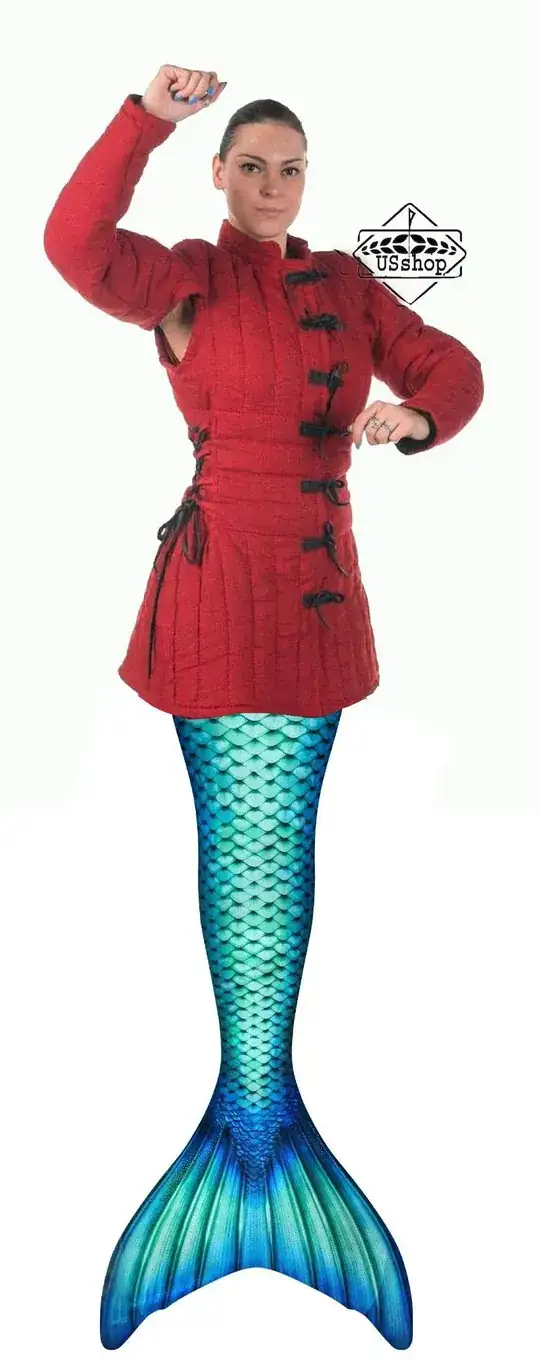I have seen a number of posts on this site about the difficulties of technological advancements for those who dwell beneath the surface of the sea, and this is colouring my treatment of mer-people in my story.
My mer-people look like a human with a cetacean-like tail in place of their legs. They can breathe both air and water. When breathing water, they take in water through the nose and mouth, and eject water through gill slits on the sides of the chest, between the ribs. When breathing air, they close their gill slits and breathe in the manner of land-dwelling mammals. Merfolk are capable of altering their buoyancy in water. They do not spend more than a few hours out of water at a time, and must use their arms to move effectively on land.
I have been considered what sort of body armour might be made by people whose only access to metal might be via occasional trade with surface dwellers, and whose native technology is neolithic, and whose warfare is similarly primitive.
The first type of armour I have considered would be made from the bones of sea mammals such as whales, as well as whale baleen, fashioned into plates and joined together with natural fibers.
The second type is similar to the first, save that it would be made from abalone shell, which is known for its impact resistance, and could be polished as an artistic statement, as well as being protective.
These would both be varieties of lamellar armour.
How feasible would these types of armour be? Please consider factors such as the ease of manufacture of each type and effectiveness against primitive weapons such as spears and knives, as well as the natural weapons of large, dangerous, aggressive sea creatures such as sharks?
